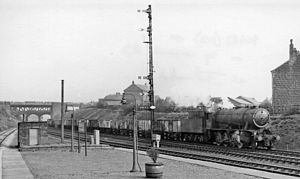
Dewsbury is a historic market, minster and mill town in the Metropolitan Borough of Kirklees, in West Yorkshire, England. It lies by the River Calder and an arm of the Calder and Hebble Navigation. It is to the west of Wakefield, east of Huddersfield and south of Leeds.

Marylebone station is a Central London railway terminus and connected London Underground station in the Marylebone area of the City of Westminster. On the National Rail network it is also known as London Marylebone and is the southern terminus of the Chiltern Main Line to Birmingham. An accompanying Underground station is on the Bakerloo line between Edgware Road and Baker Street in Transport for London's fare zone 1.
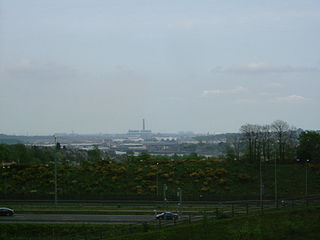
Medway is a conurbation and unitary authority in Kent in the region of South East England. It had a population in 2019 of 278,016. The unitary authority was formed in 1998 when the City of Rochester-upon-Medway amalgamated with Gillingham Borough Council and part of Kent County Council to form Medway Council, a unitary authority independent of Kent County Council.
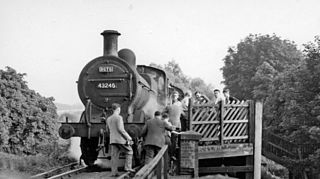
The Nickey line is a disused railway that once linked the towns of Hemel Hempstead and, initially, Luton but later Harpenden via Redbourn, in Hertfordshire, England. The course of most of the railway has been redeveloped as a cycle and walking path, and is part of the Oxford to Welwyn Garden City route of the National Cycle Network. It is approximately nine miles (14 km) long.

The Huddersfield line is the main railway line between the English cities of Leeds and Manchester via Huddersfield. It is one of the busiest MetroTrain lines. Services are operated by TransPennine Express (regional) and Northern Trains (local).
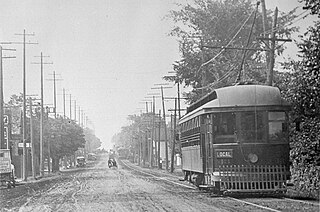
The Metropolitan Street Railway was the operator of the Metropolitan line in the Toronto area that started out as a local horsecar line and transformed itself into an electric radial line extending to Lake Simcoe. In 1904, the railway was acquired by the Toronto and York Radial Railway (T&YRR) and became the T&YRR Metropolitan Division. In 1922, the City of Toronto acquired the T&YRR and contracted Ontario Hydro to manage the four T&YRR lines including the Metropolitan. In 1927, the TTC took over the operation of the Metropolitan Line to Sutton, and renamed it the Lake Simcoe line. In 1930, the TTC closed the Metropolitan Line but shortly reopened the portion between Glen Echo and Richmond Hill operating it as the North Yonge Railways until 1948.
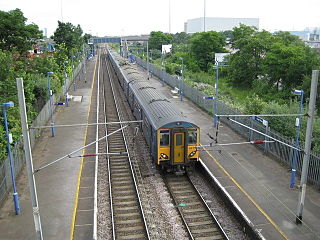
Angel Road was a railway station in Edmonton in the London Borough of Enfield, north London, on the Lea Valley line that forms part of the West Anglia Main Line, 7 miles 57 chains (12.4 km) down the line from London Liverpool Street. It was between Northumberland Park and Ponders End in Travelcard zone 4 and had the three-letter station code AGR. It is located beneath the A406 flyover of Meridian Way, and was accessed via a footpath from Conduit Lane, on an adjacent flyover to the north. The stations's immediate surroundings include non-manufacturing industrial businesses and a former gas works.
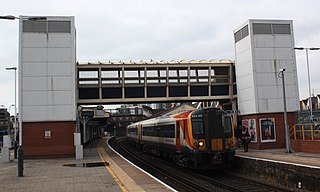
Fratton railway station is a railway station in the city of Portsmouth, on Portsea Island in the United Kingdom. It was opened in the Fratton area of Portsmouth on 1 July 1885 as an interchange station between the London, Brighton and South Coast Railway and the short-lived Southsea Railway branchline.

Rotherham Central railway station is in Rotherham, South Yorkshire, England. The station was originally named "Rotherham", becoming "Rotherham and Masborough" in January 1889 and finally "Rotherham Central" on 25 September 1950.

Dewsbury railway station serves the town of Dewsbury in West Yorkshire, England. Situated 9.25 miles (15 km) south west of Leeds on the main line to Huddersfield and Manchester, the station was opened by the London and North Western Railway in 1848.
The Waimate Branch was a branch line railway built in southern Canterbury, New Zealand to link the Main South Line with the town of Waimate, the centre of the surrounding rural area. It opened in 1877 and operated until 1966; for some of this time, it included an extension to Waihao Downs that was known as the Waimate Gorge Branch or Waihao Downs Branch. When the line closed, Waimate received the dubious distinction of being New Zealand's first major town to lose its railway line.
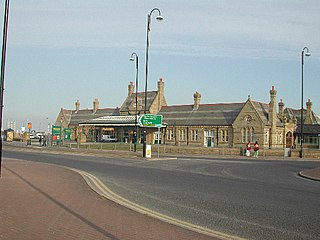
Morecambe Promenade Station was a railway station in Morecambe, Lancashire, England. It was opened on 24 March 1907 by the Midland Railway and closed in February 1994. After twelve weeks break in passenger service for the revision of track work and signalling a new Morecambe station was opened on a site closer to the town centre.

Newman railway station was a station on the Wairarapa Line in the Tararua District area of the Manawatū-Whanganui region of New Zealand’s North Island. It served the small rural community of Newman, 3 kilometres (1.9 mi) north of Eketahuna. It is accessed via Cliff Road, but is now located on private property.

The Tunnel Railway was a 2 ft narrow-gauge underground railway in Ramsgate, Kent, England. Following the restructuring of railway lines in Ramsgate in 1926, the section of line between Broadstairs and Ramsgate Harbour including a tunnel to the seafront at Ramsgate was abandoned. The narrow-gauge Tunnel Railway was opened within the disused tunnel in 1936 to connect tourist attractions and shops near Ramsgate harbour with the new railway main line at Dumpton Park.
Thornhill is a closed station. It served the country town of Thornhill in Dumfries and Galloway. The station site is a mile or so from the town. Four miles north of Thornhill is Drumlanrig Castle, home to the Duke of Buccleuch and Queensberry. The Glasgow and South Western main line rail route between Kilmarnock and Dumfries is forced to make a long detour to the east of Thornhill and through a long tunnel, rather than the more logical route nearer Thornhill town centre and up the Nith Valley, so as not to be seen from the Buccleuch estate. The distance of the station from Thornhill may be one reason that passenger use was light and stopping services ended in 1965. There was formerly a busy livestock market near to the station, which eventually closed around 2001.

Chard Junction railway station was situated on the London and South Western Railway’s West of England Main Line in Somerset, England. It was the junction of a short branch line to Chard. It was opened in 1860 as Chard Road and closed in 1966. An adjacent milk depot was served by its own sidings from 1937 to 1980. A signal box remains to control Station Road level crossing and a passing loop on the long section of single track railway between Yeovil Junction and Pinhoe.
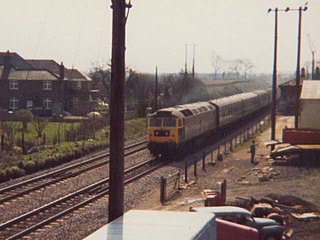
Kidlington railway station opened in 1852 on the Oxford and Rugby Railway to serve the adjacent Oxfordshire village of Kidlington, and act as a railhead for the town of Woodstock, 2.5 miles (4.0 km) away. It became a junction station in 1890 upon the opening of the Blenheim and Woodstock Branch Line, and served the area for over 100 years before falling victim to the programme of closures initiated by the Beeching Report in 1964. Following many proposals for its reopening, a new station to serve Kidlington opened in October 2015 at Oxford Parkway on the Oxford to Bicester Line.
The Pudsey loop was a railway line in the former West Riding of Yorkshire, England, which served the town of Pudsey and later offered a second connection between Bramley in the east and Laisterdyke and Dudley Hill in the west, in addition to the existing line between Leeds and Bradford Exchange station.

The Spen Valley Line was a railway that connected Mirfield with Low Moor through the Spen Valley in West Yorkshire, England. Opened up by the Lancashire and Yorkshire Railway in 1847, with full opening to Low Moor in 1848, the line served a busy industrial and textile area and allowed a connection for trains between Huddersfield and Bradford. The line was absorbed by the London & North Western Railway, the London Midland and Scottish Railway (LMS) and British Railways on Nationalisation. A separate link between Heckmondwike Central and Thornhill that opened later and was known as the Ravensthorpe Branch, allowed through running to Wakefield and beyond. The line was closed down to passengers in 1965 with freight continuing sporadically until 1981. A Spur onto the former Leeds New Line from the Ravensthorpe Branch kept the very southern end open until the late 1980s. The majority of the route is now the Spen Valley Greenway cycle path.

Bricklayers Arms was a railway station in Southwark opened by the London and Croydon Railway and the South Eastern Railway in 1844 as an alternative to the London and Greenwich Railway's terminus at London Bridge. The station was at the end of a short branch line from the main line to London Bridge and served as a passenger terminus for a few years before being converted to a goods station and engineering facility. The goods station closed in 1981.
